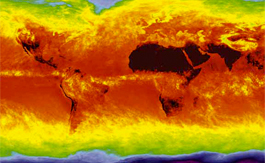New System To Beat The Heat

The unprecedented rise in temperature, unusual animal behaviour, and increased severity and occurrence of flooding are all worrying signs of climate change. It is caused by massive release of greenhouse gases (GHG) worldwide, resulting in imbalance in heat and carbon cycles.
On Dec 11, 1997, the United Nationsled Kyoto Protocol – a framework on climate change – came into being. The treaty seeks action by industrialised countries to reduce six key GHG (CO2, CH4) from 2010.
However, it will only come into force when ratified by countries responsible for 55% of rich nations’ GHG emissions. This now stands at 44% and Russia’s 17% will tip the balance. In November, the lower and upper houses of the Russian parliament endorsed the agreement, now awaiting Prime Minister Vladimir Putin’s signature.
It is envisaged that the Protocol will be enforced by early 2005 despite the refusal of the US to be a signatory, when it is the world’s worst polluter in relation to GHG emission.
Malaysia signed the Protocol in 1999 and ratified it in 2002, even though it is classified as a non-Annex 1 member. Since then, the government has put in place policies to minimise GHG emission.
Members in non-Annex 1 category do not have to pursue limitation or reduction of emission of GHG individually or jointly with a view of reducing their overall emissions by at least 5% below 1990 level, as polluting nations have to.

